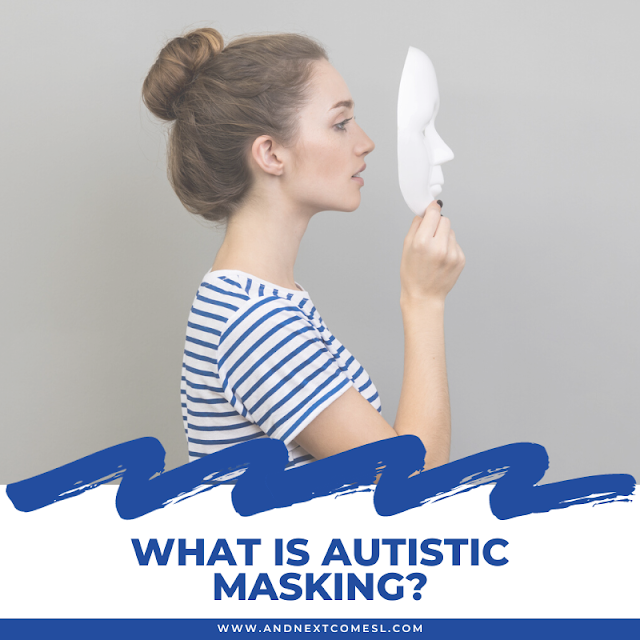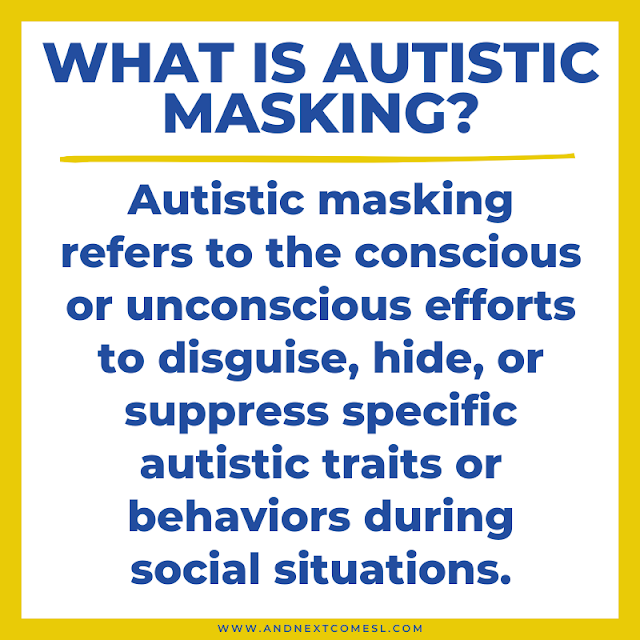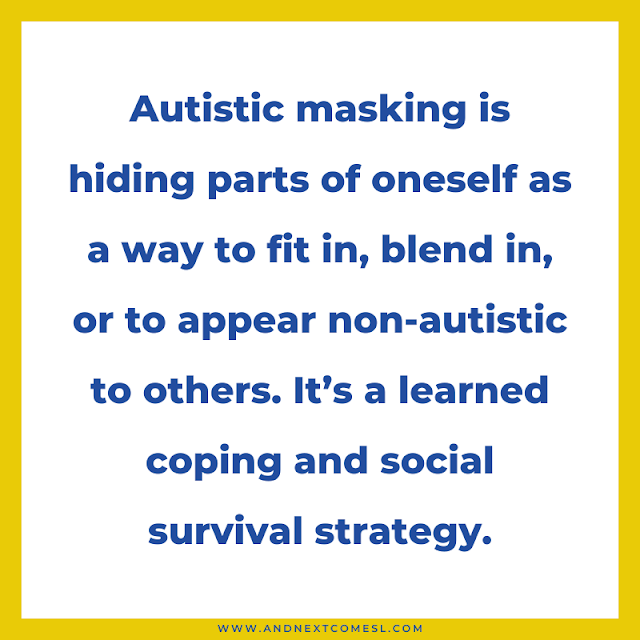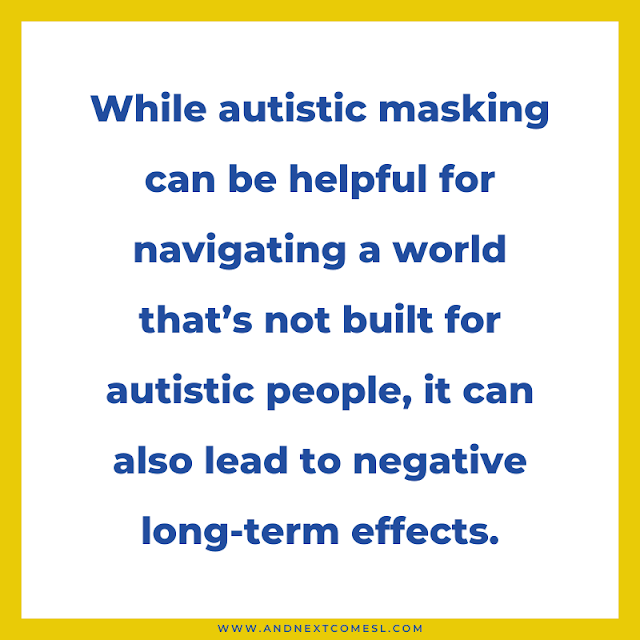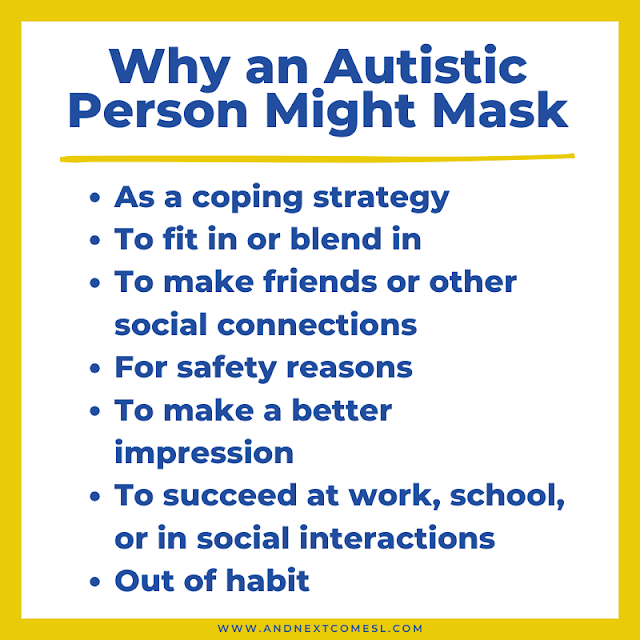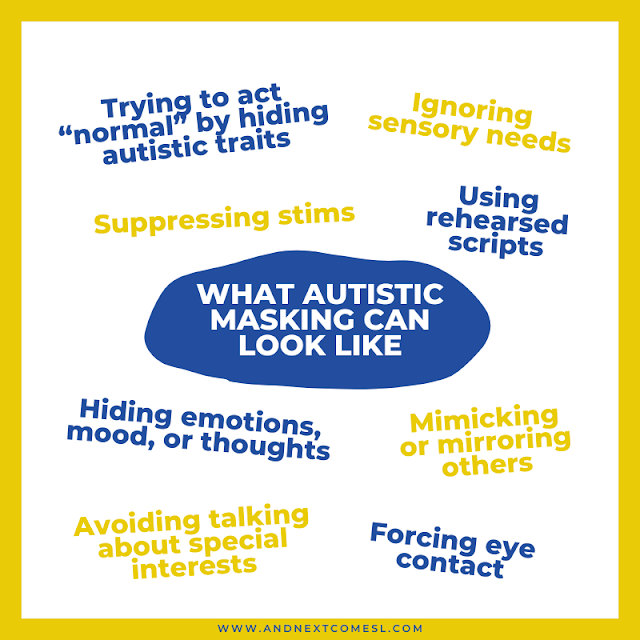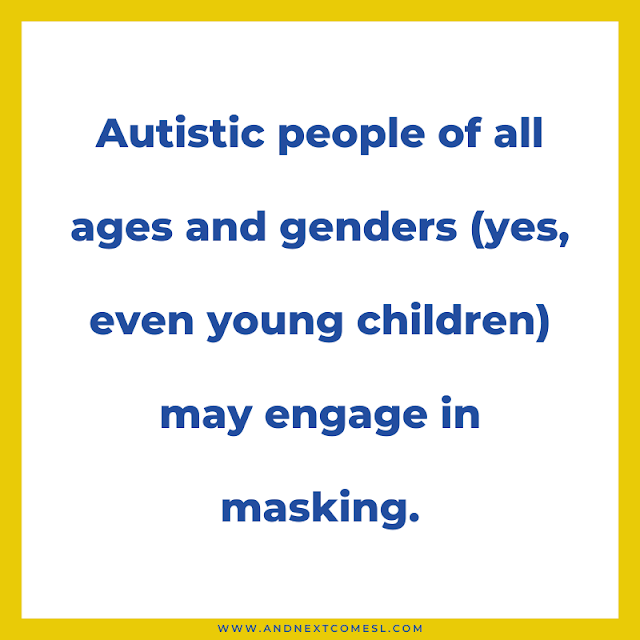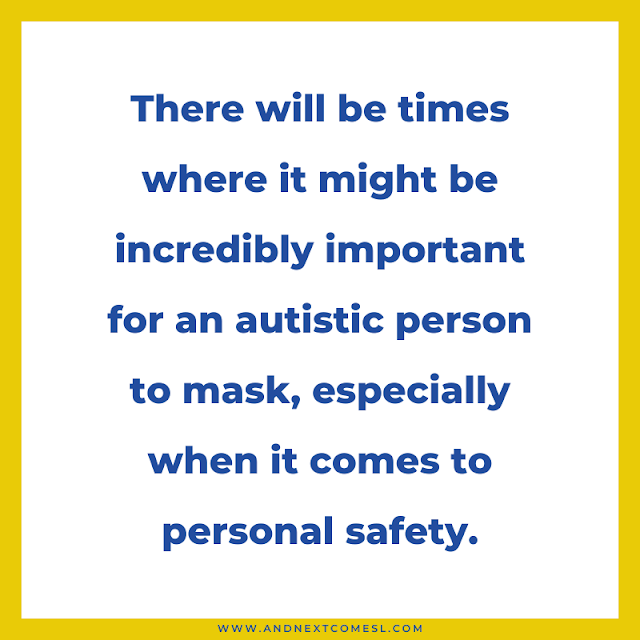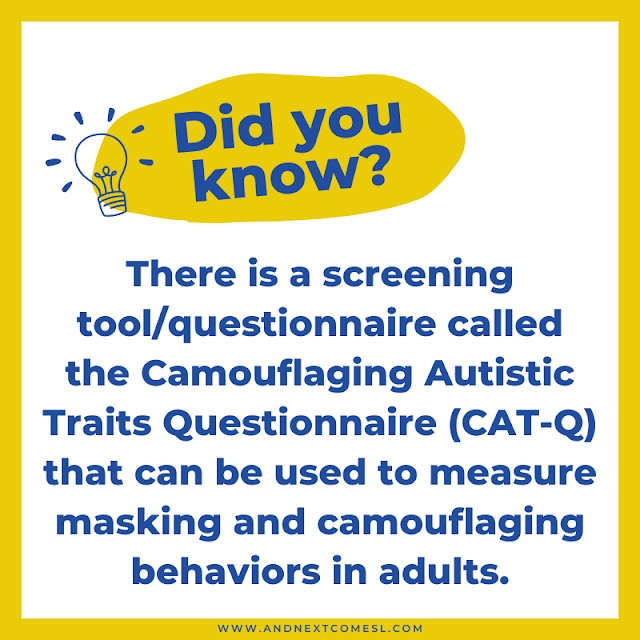There are many autistic traits and elements of autistic culture that parents, teachers, professionals, and even non-autistic and autistic individuals themselves should learn about. Especially if they want to get a better understanding of - and appreciation for - the autistic experience.
For instance, it's important to learn about stimming (or stims for short) and their benefits. And why stimming should be encouraged, not discouraged. After all, they are natural autistic responses. Unfortunately, stimming is often misunderstood, similar to a lot of other autistic traits.
Then there's something like infodumping, which is an authentic form of communication in the autistic community. A way for them to share their autistic joy.
And then there's a topic like autistic masking, which wasn't well-known or even discussed much until the past few years. Yet, it is an incredibly important topic to understand because of the impacts it can have on things such as receiving a diagnosis or appropriate accommodations. Or how it can impact mental health.
So let's start with the basics: what is autistic masking? What does it look like? Why do autistic people mask? Well, that's what we'll dig into below.
What is Autistic Masking? A Definition
Autistic masking refers to the conscious or unconscious efforts to disguise, hide, or suppress specific autistic traits or behaviors during social situations.
Essentially it's hiding parts of oneself as a way to fit in, blend in, or to appear non-autistic to others. And, as you'll see below, there are plenty of reasons why many autistic people mask their autistic traits.
It's important to remember that masking is a learned coping and social survival strategy. So it can be a helpful way for autistic people to navigate a world that's not built with them in mind. However, it can also lead to negative long-term effects, as you'll learn later on.
Autistic masking can go by other names, such as camouflaging. So you might see masking referred those terms as well.
Why Do Autistic People Mask?
There are many reasons why autistic people might mask their autistic traits, especially from their non-autistic peers, which I will dive into in more depth in another post.
But here are a few common reasons an autistic person might mask:
- As a coping strategy
- To fit in or blend in
- To make friends or other social connections
- For safety reasons (e.g., avoiding bullying, mistreatment, or being outed)
- To make a better impression
- To succeed at work, school, or in social interactions
- Out of habit
What Does Autistic Masking Look Like?
Autistic masking can vary from person to person and from situation to situation so there's no one way to mask. It will look different in each situation. In other words, masking can take a variety of forms, which again, I'll have to dive into in more depth in another blog post.
However, here are some common autistic masking examples:
- Suppressing stims
- Forcing eye contact
- Ignoring sensory needs
- Mimicking or mirroring others' actions, gestures, body language, facial expressions, or tone of voice
- Hiding emotions, mood, or thoughts
- Using rehearsed scripts
- Avoiding talking about special interests
- Trying to act "normal" by hiding autistic traits
Some Important Notes About Autistic Masking
Autistic people of all ages and genders may engage in masking. Yes, even young children. Remember, autistic masking is used a social survival or coping strategy and it can be learned quite early on.
It's also important to note that there are some negative effects to long term masking. For instance, it can lead to a loss of self-identity, anxiety, depression, delayed diagnosis, poor mental health, autistic burnout, and more.
There will also be times where it might be incredibly important for an autistic person to mask, especially when it comes to personal safety. For example, a Black male might want to mask their autistic traits when dealing with the police. Side note: there's a reason why it's so important to consider topics such as intersectionality or trauma when supporting autistic individuals.
Autistic masking can also explain why so many autistic people get diagnosed or identified as autistic later in life. Their autism was simply missed because of their ability to mask and suppress their autistic traits over the years.
There is a screening tool/questionnaire called the Camouflaging Autistic Traits Questionnaire (CAT-Q) that can be used to measure masking and camouflaging behaviors in adults. It might be a great tool to check out if you are an autistic adult. You can learn more about the research and development behind the CAT-Q here. You can also fill in the CAT-Q here if you'd like to better understand your own masking behaviors.
A Quick Recap of Autistic Masking
Whether you're a skim reader or just someone who likes a summary, here is a quick overview of autism masking. That way you can review what you learned above.
- Autistic masking refers to the conscious or unconscious efforts to disguise, hide, or suppress specific autistic traits or behaviors during social situations
- It's a learned coping and social survival strategy
- It can also be referred to as camouflaging
- There are lots of reasons why many autistic adults and children mask, from fitting in to safety reasons
- Autistic masking can include suppressing stims, ignoring sensory needs, using rehearsed scripts, and mimicking others' behaviors
- There are negative effects to long term masking, including autistic burnout and depression
- Masking can explain why so many autistic people get missed and don't get identified as autistic until later in their life (e.g., sometimes parents discover their own autism when their child is identified)
- There is a screening tool called the CAT-Q that can be used to measure autistic masking and social camouflaging in adults
So hopefully that helps answer the question what is autistic masking? It should, at the very least, give you a better understanding of what it means and what signs to look out for.


